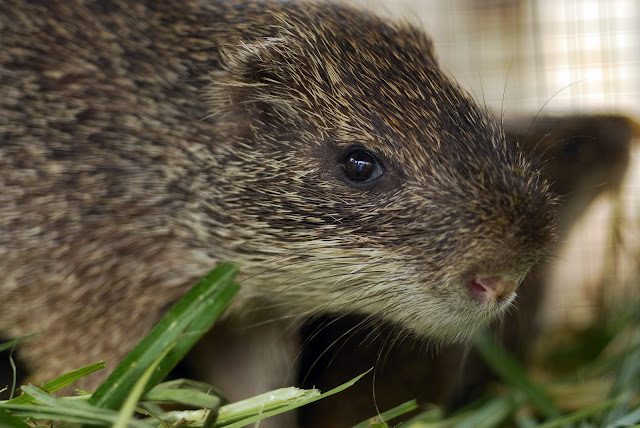And not just in the fairy tale The Princess Bride. (If you haven’t seen it, go watch it now. You’ll understand.)
 |
| Photo by James Grooves |
Actually grasscutters really aren’t all THAT big, but they are big in relative terms. And they are rodents. And though they wouldn’t attack a human, they do have very sharp teeth they use to munch down on grass, hence the name.
 |
Jonathan Mensah, Heifer participant, feeds
his grasscutters. |
In Ghana, they’re highly desired bush meat. Some even consider it a delicacy. That’s why, in 1999 when Heifer Ghana was just getting started, Roland Kanlisi the deputy country director, began looking into whether the grasscutter could be domesticated and used in Heifer projects.
And they could. A German NGO had actually begun doing just that in neighboring Burkina Faso just a few years prior.
Today, the grasscutter projects are some of the most successful in Ghana. And it really is fascinating to hear how Heifer helped pioneered the process, which has resulted in both successful farmers and a renewed environment.
Before Heifer helped domesticate the animals for farming, hunters used to either set poisonous traps for the animals or set bush fires to, quite literally, smoke the creatures out. Eating the poisonous meat would harm the humans, and bush fires often got out of control, burning nearby farmland and leaving the earth scorched.
Now, farmers in Ghana are raising them in tiered cages. Farmers like Jonathan Mensah keep upwards of 30 of the animals at a time and say the demand is very high for the animals. The grasscutter projects have been so successful, there are now 105 grasscutter farmers in just one area outside Accra, and it’s not enough.
It’s also rare to find people hunting them in the wild anymore. The environment is saved and the farmers are making a pretty penny, too. Not a bad deal if you ask me.
Read more about why Heifer is working to help other communities move away from bushmeat.

